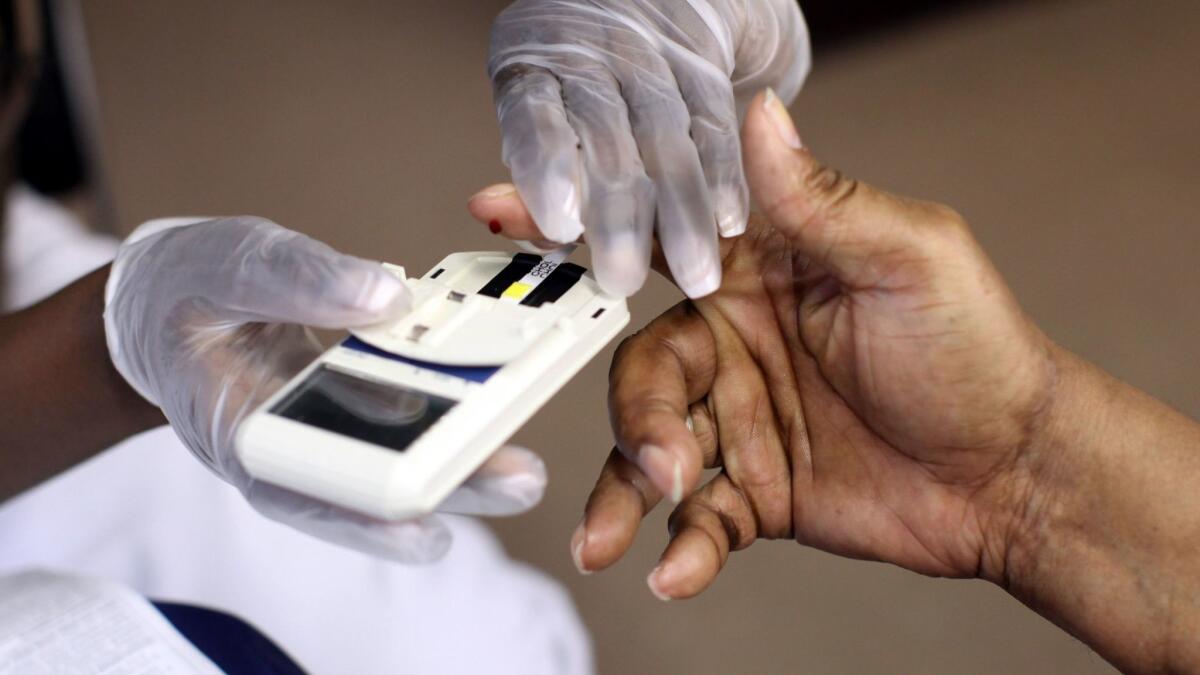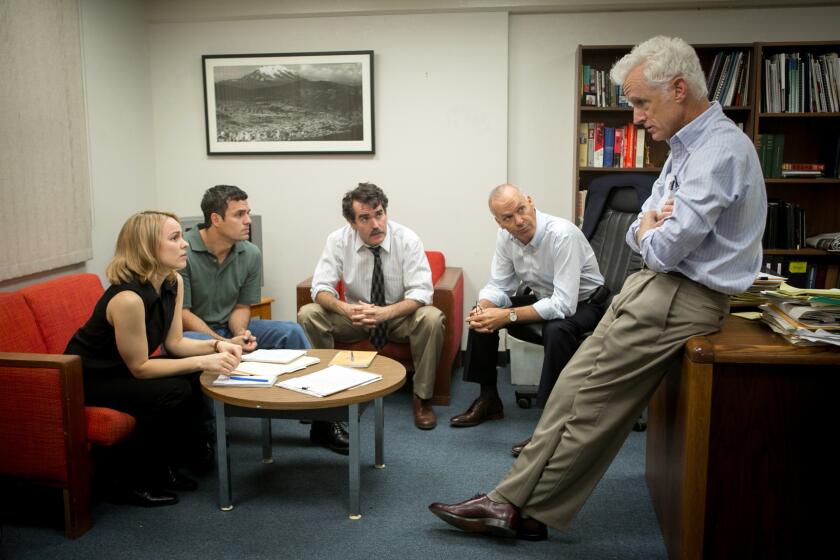Americans waste $200 billion every year on medical tests they don’t need, experts say

Sutter Health, a giant hospital chain in Northern California, thought that it had found a simple solution to doctors ordering unnecessary and wasteful tests: It deleted the button physicians used to order daily blood tests.
“We took it out and couldn’t wait to see the data,” said Ann Marie Giusto, an executive at the Sacramento-based health system.
Alas, the number of orders hardly changed. That’s because the hospital’s medical-records software “has this cool ability to let you save your favorites,” Giusto said at a recent presentation to other hospital executives and physicians. “It had become a habit.”
There are plenty of opportunities to trim waste in America’s $3.4-trillion healthcare system — but, as the Sutter example illustrates, it’s often not as simple as it seems.
Some experts estimate that at least $200 billion is wasted annually on excessive testing and treatment. This overly aggressive care also can harm patients, generating mistakes and injuries believed to cause 30,000 deaths each year.
“The changes that need to be made don’t appear unrealistic, yet they seem to take an awful lot of time,” said Dr. Jeff Rideout, chief executive of the Integrated Healthcare Assn., an Oakland nonprofit group that promotes quality improvement.
In California, that sense of frustration has led three of the state’s biggest healthcare purchasers to band together to promote care that’s safer and more cost-effective. The California Public Employees’ Retirement System (CalPERS), the Covered California insurance exchange and the state’s Medicaid program, known as Medi-Cal — which collectively serve more than 15 million patients — are leading the initiative.
Progress may be slow, but there have been some encouraging signs. In San Diego, for instance, the Sharp Rees-Stealy Medical Group said it cut unnecessary lab tests more than 10% by educating both doctors and patients about overuse.
A large public hospital, Los Angeles County-USC Medical Center, eliminated preoperative testing deemed superfluous before routine cataract surgery. As a result, patients on average received the surgery six months sooner.
These efforts were sparked by the Choosing Wisely campaign, a national effort launched in 2012 by the American Board of Internal Medicine (ABIM) Foundation. The group asked medical societies to identify at least five common tests or procedures that often provide little benefit.
The campaign, also backed by Consumer Reports, encourages medical providers to hand out wallet-sized cards to patients with questions they should ask to determine whether they truly need a procedure.
Critics have knocked Choosing Wisely for playing it too safe and not going after some of the more lucrative procedures, such as certain spine operations and arthroscopic knee surgeries.
The state effort, dubbed Smart Care California, is in the early stages as well. Initially, the group has focused on cutting the number of elective cesarean sections, reducing opioid use and avoiding overtreatment for patients suffering low back pain. In its contract with health insurers, the Covered California exchange requires that their in-network providers meet a range of quality standards, including low C-section rates.
Dr. Richard Sun, co-chairman of the Smart Care group and a medical consultant at CalPERS, said he’s pursuing safer, more affordable treatments for low back pain, a condition that cost the state agency $107 million in 2015.
For patients, overtreatment can be more than a minor annoyance.
Galen Gunther, a 59-year-old from Oakland, said that during treatment for colorectal cancer a decade ago he was subjected needlessly to repeated blood draws, often because the doctors couldn’t get their hands on earlier results. Later, he said, he was overexposed to radiation, leaving him permanently scarred.
“Every doctor I saw wanted to run the same tests, over and over again,” Gunther said. “Nobody wanted to take responsibility for that.”
At Cedars-Sinai Medical Center in Los Angeles, officials said that economic incentives still drive hospitals to think that more is better.
“We have excellent patient outcomes, but it’s at a very high cost,” said Dr. Harry Sax, executive vice chairman for surgery at Cedars-Sinai. “There is still a continued financial incentive to do that test, do that procedure and do something more.”
In addition to financial motives, Sax said, many physicians still practice defensive medicine out of fear of malpractice litigation. Also, some patients and their families expect antibiotics to be prescribed for a sore throat or a CT scan for a bump on the head.
To cut down on needless care, Cedars-Sinai arranged for doctors to be alerted electronically when they ordered tests or drugs that run contrary to 18 Choosing Wisely recommendations.
The hospital analyzed alerts from 26,424 patient encounters from 2013 to 2016. All of the guidelines were followed in 6% of those cases, or 1,591 encounters.
Sax said Cedars-Sinai studied the rate of complications, readmission, length of stay and direct cost of care among the patients in whose cases the guidelines were followed and compared those outcomes with cases where adherence was less than 50%.
In the group that didn’t follow the guidelines, patients had a 14% higher incidence of readmission and 29% higher risk of complications. Those complications and longer stays increased the cost of care by 7%, according to the hospital.
In 2013, the first year of implementation of Choosing Wisely guidelines, Cedars-Sinai said it avoided $6 million in medical spending.
For perspective, Cedars-Sinai is one the largest hospitals in the nation with $3.3 billion in revenue for the fiscal year that ended June 30. It reported net income of $301 million.
Sutter Health’s Giusto meets with doctors to present data on how many tests or prescriptions they order and how that compares to others. At one clinic, she shared slides showing that some doctors were ordering more than 70 opioid pills at a time while others prescribed fewer than 20. In response, Sutter set a goal of 28 tablets in hopes of reducing opioid abuse.
“Most of the physicians changed,” Giusto said. “But there were still two who said, ‘Screw it. I’m going to keep doing it.’ ”
Chad Terhune is a senior correspondent with California Healthline, a service of the California Health Care Foundation published by Kaiser Health News.







